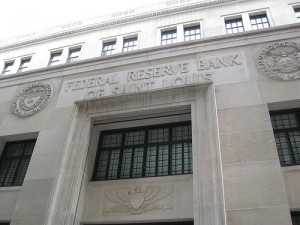Posted on 14 July 2011. Tags: 1 billion, allegations, bank of america, bank of america corp, housing market, insurance company, low quality, quarterly loss, uncertainty, wednesday morning
 Bank of America has agreed to pay $8.5 billion to resolve claims that the financial and insurance company sold mortgage-backed securities that are of low-quality before the collapse of the housing market.
Bank of America has agreed to pay $8.5 billion to resolve claims that the financial and insurance company sold mortgage-backed securities that are of low-quality before the collapse of the housing market.
The deal came after a group of investors insisted that the North Carolina-based company repurchase $47 billion worth of mortgages that the Countrywide unit sold in bonds. The agreement between parties was announced Wednesday morning.
The investors argued that Countrywide, which was bought by Bank of America for $4 billion in 2008, expanded itself at the investor’s price by servicing bad loans and continuing servicing fees. Bank of America has denied such allegations.
The mortgage settlement would reduce future uncertainty in the banking industry and resolve the issues caused by their acquisition of Countrywide, said Brian Moynihan, chief executive officer of Bank of America, on Wednesday.
The settlement, which covers 530 trusts with $424 billion principal balance, is subject to the approval of the court.
According to Keith Horowitz, a Citi analyst, the settlement that is equivalent to only 2% of the original principal balance, eliminates one of the biggest risks of investors for Bank of America.
Also, the settlement puts Bank of America to a second-quarter loss between $8.6 billion and $9.1 billion. The bank is expected to release a quarterly loss between $3.2 billion and $3.7 billion, not including the settlement and other charges.
The Bank of America Corp had a 4 percent increase in shares to $11.30 before the market opened. The investors are glad that the bank can place huge uncertainty behind it.
Posted in Finance
Posted on 04 March 2011. Tags: equivalent properties, fhfa, foreclosed properties, foreclosure, home inventory, housing market, last quarter, mortgage payment, national association of realtors, zillow
 The Federal Housing Finance Agency (FHFA) has released their year end reports regarding the housing market. What these reports have shown is that the housing market is still in a decline. The enormous amount of foreclosures that are available on the market are driving home prices even low. Lenders, looking at the escalating amount of properties on their books are driving prices even lower in an effort to get faster sales.
The Federal Housing Finance Agency (FHFA) has released their year end reports regarding the housing market. What these reports have shown is that the housing market is still in a decline. The enormous amount of foreclosures that are available on the market are driving home prices even low. Lenders, looking at the escalating amount of properties on their books are driving prices even lower in an effort to get faster sales.
Fourth quarter reports show that home prices fell 4% compared to the same quarter in the previous year. This was the largest drop in value since 2009. The report also indicates that the drop in prices varies from state to state. Idaho saw the largest drop in home prices, 16% and North Dakota saw an increase of over 5%, proving home prices have much to do with the local economy.
Foreclosed homes accounted for 37% of all sales in the last quarter. This is a rise from the previous quarter by 1%. Foreclosed properties also sold for 28% less than equivalent properties in the same area that was not distressed.
It is estimated that 1 in 7 homes are currently behind in their mortgage payment or are in the process of foreclosure. 1 in 4 homes are “upside down” meaning they owe more than what the home is valued. Both of these figures lead analysts to believe there will be more foreclosures flooding the market and driving prices lower during 2011.
Home inventory has risen to an all time high, estimated at over 12 months, and it is anticipated that the figure could remain that high during the first quarter of 2011. Other reports released by Zillow and the National Association of Realtors show that anticipated home purchases have dropped in January and February as potential buyers are holding out for another drop in pricing.
Posted in Finance
Posted on 02 February 2011. Tags: consumers, domestic banks, economic outlook, financial bailout, housing market, loan losses, loan standards, recession, small businesses, three months
 The Federal Reserve informed on Monday that banks modestly loosened their lending standards for particular business loans over the past three months, but they still kept tight standards for consumer loans.
The Federal Reserve informed on Monday that banks modestly loosened their lending standards for particular business loans over the past three months, but they still kept tight standards for consumer loans.
The Fed said that 12 percent of banks that responded to their recent survey had eased their standards to some extend on industrial and commercial loans. But, the survey discovered little change in the firm lending standards forced on consumer loans since the housing market crumpled.
With regards to the business loans, banks said the modest easing in standards portrayed a less uncertain economic outlook and raised competition from other banks to make business loans.
The survey run by Fed covered a total of 57 domestic banks that included all of the nation’s biggest institution. It represented the bulk of lending activity in the entire country.
Forty-nine banks said their policies on commercial and industrial lending were unchanged. One bank said it had slightly tightened their standards while seven banks, or 12 percent, said they had somewhat eased their lending standards.
Many small businesses have complained that the $700 billion financial bailout the government sponsored did not succeed in protecting them from being cut off from their normal lines of bank credit.
The bailout program was supposed to provide sufficient capital for banks to allow them to continue lending even as the country fell into recession.
But banks that were faced with increasing loan losses remarkably tightened their standards. That has dragged the overall economy as it caused depression on consumers, as well as business borrowing.
Banks had firmly tightened their lending standards for business and consumer loans during the peak of financial crisis in 2008. Even with loosening of loan standards for the past year, it is still much difficult to get a loan than before the crisis.
Posted in Finance
Posted on 14 January 2011. Tags: borrowers, foreclosures, housing market, purchase mortgage, treasury bonds, treasury yields, unemployment rate, year fixed mortgage, year mortgage, year treasury note
 Rates on fixed mortgages dropped for the second straight week at the same time Treasury yields are falling.
Rates on fixed mortgages dropped for the second straight week at the same time Treasury yields are falling.
The average rate on the 30-year mortgage sank to 4.71 percent this week from 4.77 percent the preceding week, Freddie Mac said on Thursday. In November, it had reached its lowest rate of 4.17 percent in 40 years.
The 15-year loan average rate dropped to 4.08 percent from 4.13 percent. It hit also hit 3.57 percent in November, the lowest rate it has ever recorded since 1991.
After the December employment report showed weaker than expected, Treasury yields dropped which moved investors to buy safer Treasury bonds. This increased its prices and lowered the yields. The 10-year Treasury note shows mortgage rates tend to trail behind the yields.
After the 40-year low in November, rates have been rising. However, investors moved their money out of Treasury and into stocks as they anticipated faster economic growth and higher inflation. Yields are apt to increase along with inflation fears.
The latest drop in rates have convinced some borrowers to refinance, but upcoming buyers remain cautious. On Wednesday, the Mortgage Bankers Association said that the number of homeowners looking to refinance increased last week. Yet, the number of people applying for a purchase mortgage fell a week ago.
Higher rates are just another obstacle that struggling housing market face. High unemployment rate, increasing foreclosures, and falling home prices are the other factors that are slowing down the market’s recovery.
Posted in Finance
 Bank of America has agreed to pay $8.5 billion to resolve claims that the financial and insurance company sold mortgage-backed securities that are of low-quality before the collapse of the housing market.
Bank of America has agreed to pay $8.5 billion to resolve claims that the financial and insurance company sold mortgage-backed securities that are of low-quality before the collapse of the housing market.
 The Federal Housing Finance Agency (FHFA) has released their year end reports regarding the housing market. What these reports have shown is that the housing market is still in a decline. The enormous amount of foreclosures that are available on the market are driving home prices even low. Lenders, looking at the escalating amount of properties on their books are driving prices even lower in an effort to get faster sales.
The Federal Housing Finance Agency (FHFA) has released their year end reports regarding the housing market. What these reports have shown is that the housing market is still in a decline. The enormous amount of foreclosures that are available on the market are driving home prices even low. Lenders, looking at the escalating amount of properties on their books are driving prices even lower in an effort to get faster sales. The Federal Reserve informed on Monday that banks modestly loosened their lending standards for particular business loans over the past three months, but they still kept tight standards for consumer loans.
The Federal Reserve informed on Monday that banks modestly loosened their lending standards for particular business loans over the past three months, but they still kept tight standards for consumer loans. Rates on fixed mortgages dropped for the second straight week at the same time Treasury yields are falling.
Rates on fixed mortgages dropped for the second straight week at the same time Treasury yields are falling.